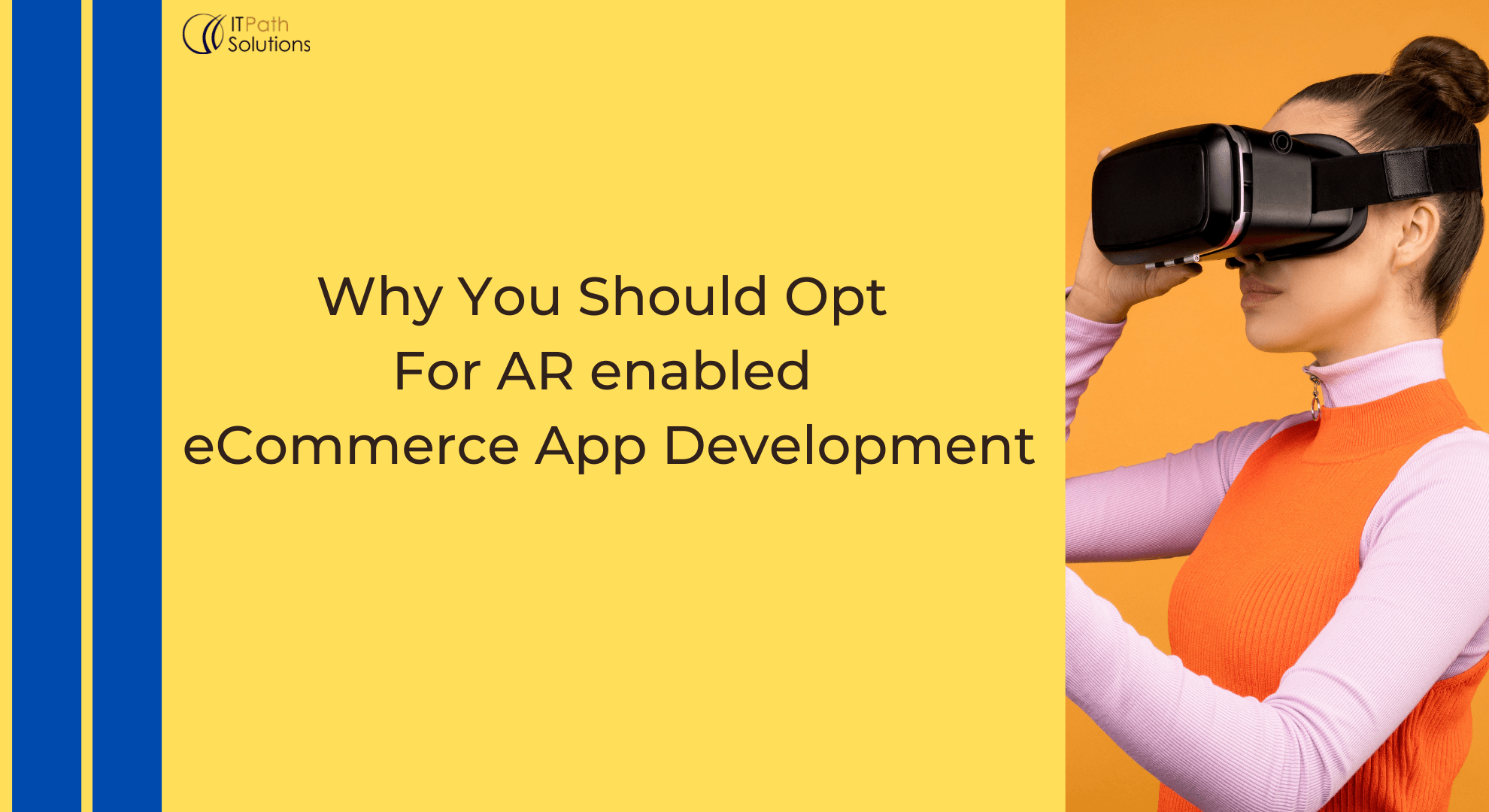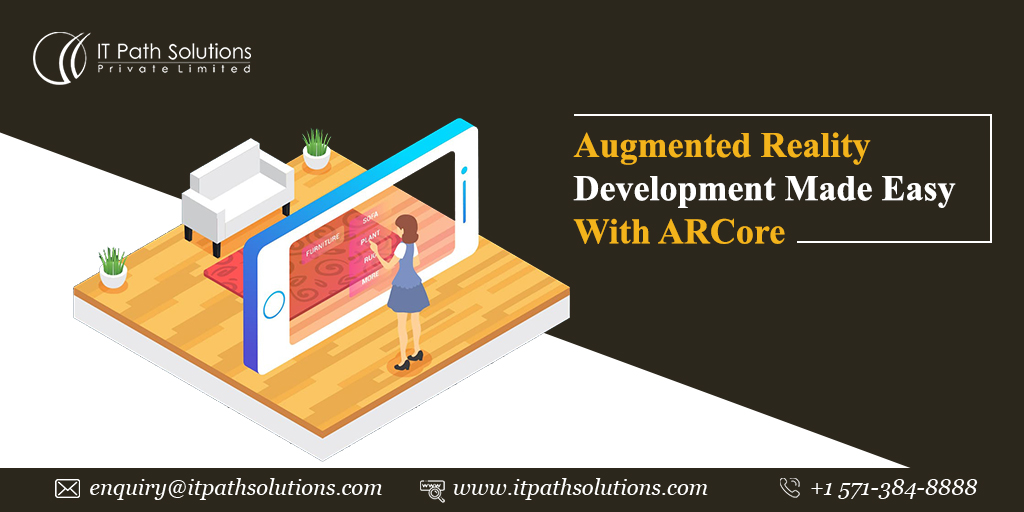Why You Should Opt For AR Enabled eCommerce App Development

The eCommerce industry is projected to reach a staggering $24.3 trillion by 2025, with a compound annual growth rate (CAGR) of 11.2% year-over-year. As mobile devices account for 72% of all eCommerce purchases, businesses looking to tap into this massive market need to distinguish themselves from the competition. One way to do this is by offering unique, cutting-edge technologies that enhance the shopping experience—augmented reality (AR) being one of the most impactful.
Current Shopping Experience
Today, most eCommerce businesses provide cross-platform apps or websites, allowing users to shop from anywhere and receive products through third-party delivery services. However, a significant gap exists in high-ticket sales, particularly in industries like furniture, where customers miss out on the tactile, in-person experience of analyzing products. Despite the availability of product photos, videos, and reviews, many customers still prefer to shop offline for such items due to a lack of interaction with the product.
This is where augmented reality in eCommerce comes into play. By integrating AR technology in eCommerce apps, businesses can offer customers a more immersive, lifelike experience, helping them make more informed purchase decisions.
AR Can Help Customers Make Better Purchase Decisions
With AR app development, businesses can create a custom shopping experience that goes beyond browsing. Augmented reality eCommerce allows customers to visualize products as if they were physically present, providing an experience closer to an offline showroom. For example, augmented reality mobile app development can enable virtual trials of garments, glasses, and fashion items, helping customers assess how products will look before buying.
Some of the key benefits AR/VR eCommerce app development offers include:
- Virtual trials for fashion items, glasses, and garments.
- Personalized recommendations and suggestions.
- Virtual tours and showcases for products like furniture.
- Virtual makeovers or hairstyle try-ons without the need for physical application.
Industrial Applications of AR/VR for eCommerce
Several industries can significantly benefit from augmented reality in eCommerce:
- Furniture Industry AR/VR Solutions: IKEA has been a pioneer in integrating AR solutions for eCommerce, allowing customers to see how furniture will look in their homes. With AR-enabled apps, users can virtually place furniture in their living spaces, adjust its position, and even visualize the entire room’s design.
- Fashion Industry AR/VR Solutions: Augmented reality app development for fashion industry allows customers to virtually try on garments, accessories, and makeup. This reduces return rates, as customers can assess fit and style before making a purchase, offering a more satisfying shopping experience.
- Household Items Industry AR/VR Solutions: When purchasing large household items such as TVs, refrigerators, or washing machines, customers can use AR to see how these items will fit in their space, ensuring compatibility with their home environment.
Key Development Parameters for Developing AR Features in eCommerce

To implement AR in your eCommerce platform, you can use Unity in combination with AR SDKs like Vuforia. This allows for the creation of 3D models and animations, which can be integrated into the app for a more interactive experience. Here are key development considerations:
- Connecting products and their variants to corresponding 3D models and materials.
- Ensuring the AR viewer is responsive and adaptable to both web and app interfaces.
- Customizing the app for AR functionality, offering an intuitive and rich user interface.
- Integrating interactive menus and features for a seamless experience.
High-Ticket eCommerce Can Benefit the Most from AR-Enabled Solutions
AR has the potential to revolutionize high-ticket eCommerce, where product visualization is crucial. Industries like furniture, fashion, and electronics stand to gain the most from augmented reality app development, offering customers the ability to try before they buy, reducing uncertainty, and ultimately driving higher conversion rates.
Main Features for AR-Based eCommerce Apps
To ensure a seamless shopping experience, AR-enabled eCommerce apps should incorporate the following features:
- Social Sign-Up/Login: Quick sign-up using social accounts or emails for easy access.
- Chatbot Support: Chatbots can assist customers in making informed decisions, improving conversion rates.
- Push Notifications: Stay in touch with users, offering them the latest promotions and updates.
- Smart Search: Enhance the search functionality with filters for price, brand, and product type.
- In-App Camera: Use the camera to scan barcodes, upload images, or generate virtual views using AR.
- Customer Support: Implement AI-powered chatbots and voice-enabled support for customer queries.
- Multiple Payment Options: Provide a variety of payment methods to build trust and convenience.
- Loyalty/Offers Programs: Entice customers with promotional campaigns and offers.
- Real-Time Dashboard and Analytics: Track sales, customer queries, and app performance.
- AR Customization: Enable customers to customize products, such as furniture, garments, or eyewear, virtually.
- Location-Based AR: Use geo-tracking to create AR experiences tailored to the user’s location.
Technology Stack Required for AR-Based eCommerce Development
To develop an AR-based eCommerce app, you’ll need the following tech stack:
- AR App Development Platforms: ARCore, ARKit, Vuforia, Wikitude, Easy AR.
- 3D Modeling Software: Maya, Blender, SketchUp, 3ds Max, Cinema 4D.
- AR Devices: Mobile devices, tablets, smart glasses, virtual retinal displays.
- Mobile App Platforms: Android, iOS.
- Cloud and CDN: Amazon, Cloudflare, MaxCDN.
- AR App Development Engines: Unity3D, Unreal Engine.
- Payment Gateways: PayPal, Braintree, E-Wallets, Stripe.
- Push Notification Services: Twilio, Push.io.
- SMS and Phone Verification: Nexmo, Twilio.
- Email Marketing Tools: Mailchimp, Mandrill.
- Real-Time Analytics: Apache Storm, Google Cloud Data Flow.
Conclusion
As AR technology in eCommerce becomes more accessible, major platforms like iOS and Android are integrating AR features, and cross-platform tools like Flutter are also adding AR capabilities. The future of augmented reality eCommerce is bright, with more apps offering immersive experiences that will change how users shop online.
If you’re looking to develop your own AR-enabled eCommerce app, consider reaching out to an experienced development team to bring this innovative technology to your business and enhance your customer experience.
 Healthcare
Healthcare  Education
Education  Real Estate
Real Estate  Logistic
Logistic  Themes
Themes
 Plugins
Plugins
 Patterns
Patterns
